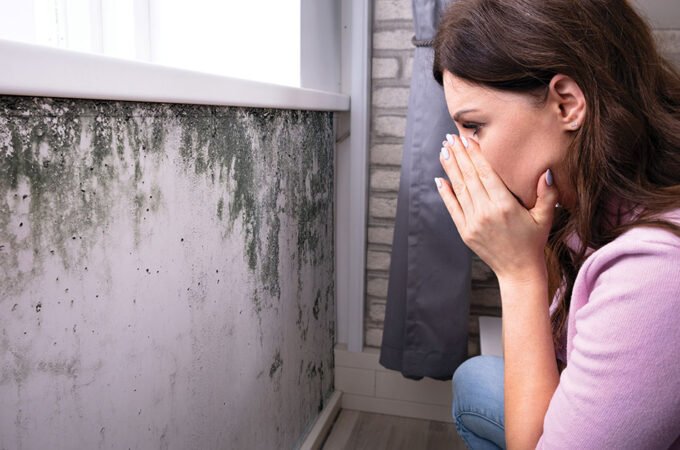
Creating a Safe Backyard for Your Dogs
Every responsible dog owner wants their pet to be able to have a happy and fulfilling life. Where there are a number of different factors that go into making this happen, one thing that is sure to be a hit with any dog is a nice, big backyard where they can play.
A secure and well-maintained backyard not only enriches your dog’s life, it can also be a great place to entertain guests and spend time with the family. However, safety comes first—your dog deserves to be able to play somewhere where they’re protected while able to enjoy the outdoors.
Whether you’re a seasoned homeowner looking to enhance your pet’s safety or a new dog owner creating a pet-friendly space, there are some essential steps to make your backyard a safe haven for your dogs.
Table of Contents
ToggleAssessing the Space
The first step in transforming your backyard into a secure play area for your dog involves seeing the space through their eyes. Begin by walking through your yard and noting potential hazards. These could range from toxic plants and harmful chemicals to sharp objects that could cause injury. It’s also crucial to look for potential escape routes that might tempt a clever pet.
- Toxic Plants: Many common garden plants can be dangerous to dogs. For example, lilies, azaleas, and sago palms are toxic and can cause serious health issues if ingested.
- Escape Routes: Check for gaps under fencing or spaces between gate posts that might allow a small or determined dog to escape. It’s important to ensure all boundaries are secure, not just for your pet’s safety but also to prevent them from getting lost or wandering into the street.
Conducting this initial survey with your dog’s behavior and size in mind will help you identify specific areas that need attention, thereby preventing accidents and ensuring their safety while outside. Regardless of how you prepare your backyard, you should always microchip your dog so that they can be identified if they ever escape.
Fencing Solutions
Installing the right kind of fencehelps ensure your dog’s safety while allowing them to enjoy your backyard. Some aspects to consider are as follows:
Choosing the Right Material
- Wood: Wooden fences offer privacy and a traditional look. They can be painted or stained to match your home’s exterior. However, wood requires regular maintenance to prevent rot and damage. Ensure there are no splinters or sharp edges where your dog might hurt themselves.
- Vinyl: Vinyl fencing is durable and requires little maintenance. It won’t rot or splinter like wood and can provide a smooth, safe surface for pets. Vinyl panels can also block your dog’s view outside, which might help reduce barking at passersby or other animals.
- Chain Link: This is one of the most cost-effective options and provides durability. It’s excellent for dogs that like to see out. However, smaller mesh sizes are recommended to prevent paws or jaws from getting stuck.
- Metal: Aluminum or wrought iron fences offer durability and a high-end look but are typically more expensive. These are great for security and are difficult for dogs to climb, but they often offer less privacy.
Height Considerations
The height of your fence should be tailored to your dog’s size and jumping ability. While there will be outliers depending on breed, energy level, and natural ability, a general rule is:
- Small Dogs: Fences should be at least 4 feet high.
- Medium to Large Dogs: A minimum of 5-6 feet can prevent them from jumping over.
- High Jumpers: Some breeds are excellent jumpers, and for these, you might consider fences that are over 6 feet tall or incorporate a curved top to deter climbing.
Digging Deterrents
Dogs that like to dig pose a unique challenge. You not only need to have a secure fence, you also need to reinforce underneath the fence or else your dog may dig themselves to freedom.
- Concrete Footers: Installing a concrete base along the fence line can prevent dogs from being able to dig under the fence.
- L-shaped Footer: An L-shaped footer of wire mesh buried at the base of the fence, extending into the yard, can discourage digging.
- Rocks or Chain Link: Placing large rocks or burying chain link fencing just below the surface can also deter digging without the need to lay concrete.
Gate Security
Gates are often the weakest point in a fence. You’d be surprised how smart dogs can be—some particularly intelligent breeds can figure out how to open gates by observing their owners! Your options include:
- Double Latching: Install gates with top and bottom latches. Dogs can learn to open a single latch but two might confuse them.
- Self-closing Gates: Gates that automatically close after opening can prevent accidental escapes if someone forgets to close the gate.
- Visibility Blockers: If your dog gets excited by seeing other animals or people, consider adding a privacy screen or panel to the gate area to block their view and reduce agitation.
By considering these detailed aspects when planning your fencing, you can create a backyard environment that is safe and enjoyable for your dog. This proactive approach not only secures your pet but also provides peace of mind knowing that your furry friend is protected while outdoors.
Creating Shade and Shelter
Providing adequate shade and shelter in your backyard is crucial for your dog’s comfort and safety, especially during harsh weather conditions. Planting trees not only enhances the natural beauty of your yard but also provides much-needed shade. Choose species that grow quickly and have dense foliage. Ensure any trees planted are non-toxic to dogs.
If natural shade is limited in your backyard, consider installing a pergola, gazebo, or doghouse. These structures provide refuge from the sun and shelter from rain or snow. When choosing a doghouse, ensure it is large enough for your dog to stand and turn around comfortably, but cozy enough to retain body heat during colder months.
Safe Landscaping
Creating a pet-safe landscape involves more than just choosing the right plants; it also means selecting ground cover and other gardening materials that are safe for your furry friend.
- Pet-Safe Plants: Familiarize yourself with which plants are safe for dogs and which aren’t. For instance, roses might be non-toxic, but their thorns can pose risks. Opt for smooth-leaved plants like snapdragons, petunias, or camellias, which are safer and still add color and texture to your garden.
- Mulches and Ground Covers: Cocoa mulch is popular for its color and fragrance, but it’s toxic to dogs. Safer alternatives include cedar or pine bark mulch, which are non-toxic and can help deter pests. For ground cover, consider creeping thyme or buffalo grass, which are durable and safe for pets.
- Fertilizers and Pesticides: Use organic and natural products for fertilizing your plants and controlling pests. These are safer for pets compared to their chemical counterparts, which can be harmful if ingested or contacted.
By choosing the right materials and plants, you can create a landscape that is both beautiful and safe for your dog to explore.
Conclusion
Creating a safe and enjoyable backyard for your dogs is a rewarding endeavor that enhances their quality of life and gives you peace of mind. By taking a proactive approach to backyard safety, you ensure that your outdoor space isn’t just beautiful, but also safe for your dogs. The effort you put into creating this environment pays off in the happiness and health of your dog.






